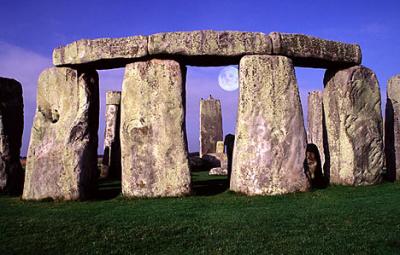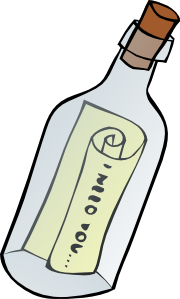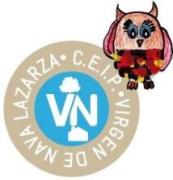PET for Schools Vocabulary Trainer
Click on the link to have some extra practice with the vocabulary you need to know for your PET for Schools test.
PET for Schools: Real Speaking Test
Have a look at these two candidates during one of the parts of their speaking test. Do you like how they do it?
Cambridge Monolingual wordlists

Here there are two books (one with the definitions and the other one without them) with the vocabulary you need to know for your Cambridge examinations. I thought you might want to print or save them to carry on practicing at home.
Inventors: ROBERT WILHELM BUNSEN (200th Anniversary)

Robert Wilhelm Bunsen (March 30, 1811-August 16, 1899) was a German chemist. He perfected the burner that was named after him, and worked on emission spectroscopy of heated elements.
Bunsen was the youngest of four sons. After attending school in Holzminden, he studied chemistry at the University of Gottingen. He received his doctorate at 19 and then, from 1830 to 1833, traveled across western Europe. During this time, he met Runge, the discoverer of aniline, Justus von Liebig in Giessen, and Mitscherlich in Bonn.
After his return to Germany, Bunsen became a lecturer at Gottingen and began experimental studies of the (in)solubility of metal salts of arsenious acid. Today, his discovery of the use of iron oxide hydrate as a precipitating agent is still the best known antidote against arsenic poisoning.
Click here to learn more about him.
STONEHENGE

Now that we’ve learned about this huge and mysterious circle of stones in the south of England, I thought you may want to find out a bit more about it.
Click on the link to get "there".
Questions: MACHINES & TRANSPORTATION

(Give reasons to support your answers)
1. What is a machine?
2. What is the difference between a simple machine and a complex machine?
3. Name the six simple machines and explain how they work.
4. What did people use to shoot arrows?
5. What did people build to get water for their plants?
6. What do ramps help us to do?
7. How did the Egyptians workers move the rockds up the ramps?
8. What fuels do most vehicles use today?
9. What vehicles don’t produce smoke or pollution?
10. What type of vehicles use human energy?
PAST PERFECT
[had + past participle]
Examples:
- You had studied English before you moved to New York.
- Had you studied English before you moved to New York?
- You had not studied English before you moved to New York.
Complete List of Past Perfect Forms
USE 1 Completed Action Before Something in the Past

The Past Perfect expresses the idea that something occurred before another action in the past. It can also show that something happened before a specific time in the past.
Examples:
- I had never seen such a beautiful beach before I went to Kauai.
- I did not have any money because I had lost my wallet.
- Tony knew Istanbul so well because he had visited the city several times.
- Had Susan ever studied Thai before she moved to Thailand?
- She only understood the movie because she had read the book.
- Kristine had never been to an opera before last night.
- We were not able to get a hotel room because we had not booked in advance.
- A: Had you ever visited the U.S. before your trip in 2006?
B: Yes, I had been to the U.S. once before. - We had had that car for ten years before it broke down.
- By the time Alex finished his studies, he had been in London for over eight years.
- They felt bad about selling the house because they had owned it for more than forty years.
MOREOVER
If the Past Perfect action did occur at a specific time, the Simple Past can be used instead of the Past Perfect when "before" or "after" is used in the sentence. The words "before" and "after" actually tell you what happens first, so the Past Perfect is optional. For this reason, both sentences below are correct.
Examples:
- She had visited her Japanese relatives once in 1993 before she moved in with them in 1996.
- She visited her Japanese relatives once in 1993 before she moved in with them in 1996.
HOWEVER

If the Past Perfect is not referring to an action at a specific time, Past Perfect is not optional. Compare the examples below. Here Past Perfect is referring to a lack of experience rather than an action at a specific time. For this reason, Simple Past cannot be used.
Examples:
- She never saw a bear before she moved to Alaska. Not Correct
- She had never seen a bear before she moved to Alaska. Correct
ADVERB PLACEMENT
The examples below show the placement for grammar adverbs such as: always, only, never, ever, still, just, etc.
Examples:
- You had previously studied English before you moved to New York.
- Had you previously studied English before you moved to New York?
ACTIVE / PASSIVE
Examples:
- George had repaired many cars before he received his mechanic’s license. Active
- Many cars had been repaired by George before he received his mechanic’s license. Passive
More About Active / Passive Forms
EXERCISES AND RELATED TOPICS
- Verb Tense Exercise 11 Simple Past and Past Perfect
- Verb Tense Exercise 12 Simple Past, Present Perfect, and Past Perfect
- Verb Tense Exercise 13 Past Perfect and Past Perfect Continuous
- Verb Tense Exercise 14 Present Perfect, Past Perfect, Present Perfect Continuous, and Past Perfect Continuous
- Verb Tense Exercise 17 Present and Past Tense Review
- Verb Tense Practice Test Cumulative Verb Tense Review
- Verb Tense Final Test Cumulative Verb Tense Review
La hora del Planeta
La Hora del Planeta empezó en una sola ciudad de un país el 31 de marzo de 2007, cuando 2,2 millones de personas de Sidney, Australia, apagaron sus luces durante una hora para reclamar acciones contra el cambio climático.
Un año después, 370 ciudades de más de 35 países convirtieron esta iniciativa en un movimiento global por la sostenibilidad, consiguiendo que entre 50 y 100 millones de personas apagaran las luces en la Hora del Planeta 2008. Edificios emblemáticos como el puente Golden Gate, el Coliseo de Roma, Times Square o el Cristo Redentor de Río de Janeiro se unieron a este llamamiento de acción por el clima oscureciéndose durante una hora.
La Hora del Planeta 2009 hizo historia y se convirtió en la acción voluntaria global más grande nunca vista, participando cientos de millones de personas de todo el mundo. Se apagaron luces de 4.159 pueblos y ciudades de 88 países, incluyendo 73 capitales y 9 de las 10 ciudades más pobladas del mundo. La Esfinge y las Pirámides de Giza, la Torre Eiffel de París, Table Mountain de Ciudad del Cabo o las cataratas del Niágara se unieron a las más de 1.000 maravillas del mundo en esta llamada a la acción contra el cambio climático.
Este movimiento histórico fue más allá durante la Hora del Planeta 2010, cuando ciudadanos de 128 países de todos los continentes apagaron sus luces, celebraron fiestas y reuniones a la luz de las velas y organizaron muchas otras actividades para mostrar lo que puede hacer el mundo cuando actúa unido. La ciudad prohibida de Beijing, la Puerta de Branderburgo, las cataratas Victoria o el Museo de la Paz de Hiroshima se unieron a la lista creciente de iconos en todos los rincones del mundo para simbolizar la lucha contra el cambio climático.
En un intento de promover un cambio de actitud global, la Hora del Planeta 2011 irá más allá de la hora y del cambio climático, señalando el momento a partir del cual los individuos, empresas y gobiernos se comprometerán a realizar acciones a favor del planeta para todo el año. Hogares, oficinas, edificios oficiales e iconos arquitectónicos de Europa, Asia, África, Oceanía y América se oscurecerán para simbolizar las acciones de las personas para ir más allá de la hora.
La Hora del Planeta es un mensaje universal de esperanza y acción.
A message from Rachael

Rachael (our former language assistant) has sent us a message with a link to play a game on Simple Machines that you’re going to love.
Here is her message:
Thought this was so cute-- I had WAY too much fun playing it myself, haha-- if anything, it offers easy graphics for when teaching simple machines.
Hope all is well! Xo
Rachael White
Thanks a lot Rachael. We all miss you a lot!!
Click here to start the game SIMPLE MACHINES
Repasando Geografía

Pincha aquí para repasar la geografía mundial y sus gentilicios.
En este otro link encontrarás actividades para repasar los países y capitales de Europa.
Y en este otro podrás repasar las capitales de América.
¡¡¡SUERTE!!!
19th March: FATHER'S DAY

Over the years
As we grow old,
We remember our father
So brave and bold.
In the garden,
Leaning on the plow,
He would listen to me;
I see him now.
He would give advice
And understand;
He was always there
To lend a hand.
God made fathers
Strong and firm,
For he knew our lives
Would have great concerns.
So he gave us fathers
To teach us to pray,
And guide our lives,
And show us the way.
So on his day
Let’s take the time
To say "Thanks, dad.
I’m glad you’re mine."
Poem by Mary Frances Bogle
St. Patrick's Day Trivia Hunt
HAPPY St. Patrick’s Day!!
Have fun finding the answers to our
St. Patrick’s Day Trivia Hunt


Visit the links below to find the answers to the questions about St. Patrick’s Day.
You’ll have to be careful and read and think. Have Fun!!
 St. Patrick’s Day History
St. Patrick’s Day History Who Did Patrick’s Homework An on-line story to read
Who Did Patrick’s Homework An on-line story to read  The Real Blarney Stone
The Real Blarney Stone  Legends and Stories
Legends and Stories  What are Leprechauns
What are Leprechauns  History, Parades, and Facts
History, Parades, and Facts  Traveling by Air to Dublin
Traveling by Air to Dublin

Here are the questions. Happy Hunting!!
- When was St. Patrick born?
- What did St. Patrick supposedly do to help Ireland?
- Where and when was St. Patrick’s Day first celebrated in America?
- Where is the largest parade held in America?
- What gift do you get if you kiss the Blarney Stone?
- Where did the Blarney Stone come from?
- How can one find a leprechaun?
- How did St. Patrick use the shamrock in his teachings?
- How long does it take to fly from Madrid to Dublin?
- Who really did Patrick’s homework?

RELATIVE PRONOUNS (Relative Clauses)
In grammar, the word relative refers to a previously used word or clause in the same sentence; therefore, when pronoun words such as who, which or that are used to begin a relative clause they are referred to as relative pronouns. A relative clause is a qualifying clause in a sentence that refers to, and provides additional information about, a preceding noun or pronoun and often begins with a relative pronoun.
***
How are these three relative pronouns used in relation to persons, animals, things or collective nouns (nouns that refer to a group of people or things considered as a single unit such as the word "committee") in a sentence?
Who is used to refer to persons.
Which is used to refer to animals, things and occasionally collective nouns referring to persons.
- That is used to also refer to animals or things; however, it can also be used to refer to people.
***
Example Sentences Using the Relative Pronouns:
Who
1. Doctors who specialize in treating diseases and conditions of the larynx are called laryngologists.
In this example, the relative pronoun "who" refers back to the noun word "Doctors".
2. In Greek mythology, Helen of Troy, who was also known as Helen of Sparta, was the wife of Menelaus.
Here, the relative pronoun "who" refers back to the proper noun word "Helen".
***
Which
1. The American lobster, which thrives in the cold waters of the North Atlantic coast, is a solitary sea crustacean.
In this example, the relative pronoun"which" refers back to the noun word "lobster".
2. Our log cabin, which we purchased last week, is located in Virginia.
Here, the relative pronoun "which" refers back to the noun word "cabin".
3. The audience, which had become lukewarm toward the singers in Act I of the play, became enamored with the new singers in Act II.
In this sentence, the relative pronoun "which" relates back to the collective noun word "audience".
***
That
1. The blouse that Collette wore had a stain on its sleeve.
In this example, the relative pronoun "that" refers back to (or is relative to) the noun word "blouse".
2. Porpoises have a communicative ability that is quite unique.
Here, the relative pronoun "that" refers back to the noun word "ability".
3. The men that work atop high buildings cannot afford to have a fear of heights.
In this sentence, the relative pronoun "that"refers back to the noun word "men".
St. PATRICK'S DAY

This month we are going to celebrate St. Patrick’s Day. Get ready for exciting and meaningful activities!
This is my selection of interesting websites. They are all related to St. Patrick’s Day and lots of ideas, songs, crafts and many more resources. Happy surfing!
Kidskonnect: St. Patrick’s Day
English-zone: Saint Patrick’s Day Symbols
Ladies and Gentlemen, here's PICO LISTO!!!

Our School already has a mascot and a name for it!!
This is our owl. There are many like it, but this one is ours.
It’s a smart and clever owl called PICO LISTO.
The Wise Owl has all the knowledge. Owls have also been associated with wisdom and prosperity as a result of frequently being companion animals for goddesses.
Making electricity
Just as electricity can make magnetism, so magnetism can make electricity. A bicycle dynamo is a bit like an electric motor inside. When you pedal your bicycle, the dynamo clipped to the wheel spins around. Inside the dynamo, there is a heavy core made from iron wire wrapped tightly around—much like the inside of a motor. The core spins freely inside some large fixed magnets. As you pedal, the core rotates inside these outer magnets and generates electricity. The electricity flows out from the dynamo and powers your bicycle lamp.
The electric generators used in power plants work in exactly the same way, only on a much bigger scale. Instead of being powered by someone’s legs, pedalling furiously, these large generators are driven by steam. The steam is made by burning fuels or by nuclear reactions. Power plants can make enormous amounts of electricity, but they waste quite a lot of the energy they produce. The energy has to flow from the plant, where it is made, to the homes, offices, and factories where it is used down many miles of electric power cable. Delivering electricity this way can waste up to two thirds of the power originally produced!
Another problem with power plants is that they make electricity by burning "fossil fuels" such as coal, gas, or oil. This creates pollution and adds to the problem known as global warming (the way Earth is steadily heating up because of the energy people are using). Another problem with fossil fuels is that supplies are limited and they are steadily running out.

Photo: Making clean, renewable energy from the wind. Each of these giant turbines contains an electricity generator.
There are other ways to make energy that are more efficient, less polluting, and do not contribute to global warming. These types of energy are called renewable, because they can last indefinitely. Examples of renewable energy include wind turbines and solar power. Unlike huge electric power plants, they are often much more efficient ways of making electricity. Because they can be sited closer to where the electricity is used, less energy is wasted transmitting power down the wires.
Wind turbines are effectively just electric generators with a propeller on the front. The wind turns the propeller, which spins the generator inside, and makes a study current of electricity.
Unlike virtually every other way of making electricity, solar cells (like the ones on calculators and digital watches) do not work using electricity generators and magnetism. When light falls on a solar cell, the material it is made from (silicon) captures the light’s energy and turns it directly into electricity. Potentially, this means solar cells are an extremely efficient way to make electricity. A home with solar electric panels on the roof might be able to make most of its own electricity, for example.
The power of electricity
Before the invention of electricity, people had to make energy wherever and whenever they needed it. Thus, they had to make wood or coal fires to heat their homes or cook food. The invention of electricity changed all that. It meant energy could be made in one place then supplied over long distances to wherever it was needed. People no longer had to worry about making energy for heating or cooking: all they had to do was plug in and switch on—and the energy was there as soon as they wanted it.
Another good thing about electricity is that it’s like a common "language" that all modern appliances can "speak." You can run a car using the energy in gasoline, or you can cook food on a barbecue in your garden using charcoal, though you can’t run your car on charcoal or cook food with gasoline. But electricity is quite different. You can cook with it, run cars on it, heat your home with it, and charge your cellphone with it. This is the great beauty and the power of electricity: it’s energy for everyone, everywhere, and always.
Measuring electricity
We can measure electricity in a number of different ways, but a few measurements are particularly important.

A brief history of electricity
- 600 BCE: Greek philosopher Thales of Miletus (c.624–546 BCE) discovered static electricity.
- 1600 CE: English scientist William Gilbert (1544–1603) was the first person to use the word "electricity." He believed electricity was caused by a moving fluid called humor.
- 1733: French scientist Charles du Fay (1698–1739) found that there were two different kinds of static electric charge.
- 1752: American printer, journalist, scientist, and statesmen Benjamin Franklin (1706–1790) carried out further experiments and named the two kinds of electricity "positive" and "negative."
- 1780: Italian biologist Luigi Galvani (1737–1798) touched two pieces of metal to a dead frog’s leg and made it jump. This led him to believe electricity is made inside animals’ bodies.
- 1785: French scientist Charles Augustin de Coulomb (1736–1806) explored the mysteries of electric fields: the electrically active areas around electric charges.
- 1800: One of Galvani’s friends, an Italian physics professor named Alessandro Volta (1745–1827), realized "animal electricity" was made by the metals Galvani had used. After further research, he found out how to make electricity by joining different metals together and invented batteries.
- 1827: German physicist Georg Ohm (1789–1854) found some materials carry electricity better than others and developed the idea of resistance.
- 1820: Danish physicist Hans Christian Oersted (1777–1851) put a compass near an electric cable and discovered that electricity can make magnetism.
- 1821: A French physicist called Andre-Marie Ampère (1775–1836) put two electric cables near to one another, wired them up to a power source, and watched them push one another apart. This showed electricity and magnetism can work together to make a force.
- 1821: Michael Faraday (1791–1867), an English chemist and physicist, developed the first, primitive electric motor.
- 1830s: American physicist Joseph Henry (1797–1879) and British inventor William Sturgeon (1783–1850) independently made the first practical electromagnets and electric motors.
- 1831: Building on his earlier discoveries, Michael Faraday invented the electric generator.
- 1840: Scottish physicist James Prescott Joule (1818–1889) proved that electricity is a kind of energy.
- 1870s: Belgian engineer Zénobe Gramme (1826–1901) made the first large-scale electric generators.
- 1873: James Clerk Maxwell (1831–1879), another British physicist, set out a detailed theory of electromagnetism (how electricity and magnetism work together).
- 1881: The world’s first experimental electric power plant opened in Godalming, England.
- 1882: Thomas Edison (1846–1931) built the first large-scale electric power plants in the USA.
- 1890s: Edison’s former employee Nikola Tesla (1856–1943) promoted alternating current (AC) electricity, a rival to the direct current (DC) system promoted by Edison. Edison and Tesla battled for supremacy and, although Edison is remembered as the pioneer of electric power, it was Tesla’s AC system that ultimately triumphed.
DON’T play with electricity!
Electricity is useful—but it’s dangerous as well. The electricity that travels from power plants is thousands of times higher voltage and more dangerous than the electricity in our homes.
 If you are silly enough to touch or play near power equipment, you could die a very painful and unpleasant death—electricity doesn’t just shock you, it burns you alive. Heed warnings like this one and stay well away.
If you are silly enough to touch or play near power equipment, you could die a very painful and unpleasant death—electricity doesn’t just shock you, it burns you alive. Heed warnings like this one and stay well away.
The electricity that comes out of household power sockets is also dangerous enough to kill, so be sure to treat that with respect too. Don’t play with household power sockets or push things into them. Don’t take apart electrical appliances, because dangerous voltages can linger inside for a long time after they are switched off.
It’s generally safe to use small (1.5 volt) flashlight batteries for your experiments if you want to learn about electricity; they make relatively small voltages and electric currents that do you no harm. Ask an adult for advice if you’re not sure what’s safe.
It’s extremely important to be curious and to experiment—that’s what science is all about. But it’s also important to stay alive. If you’re not sure about anything electrical, be sure to leave it well alone.
